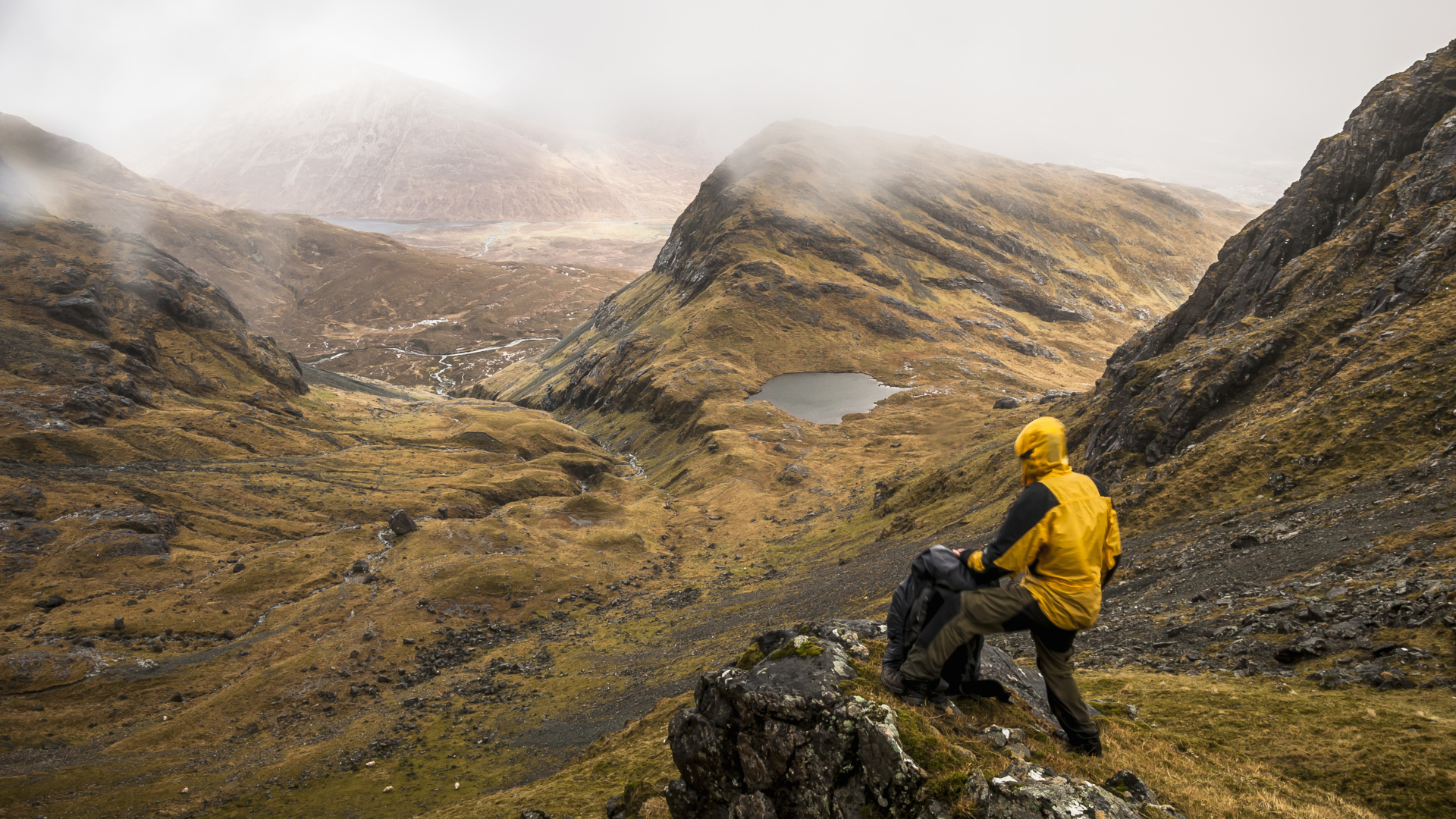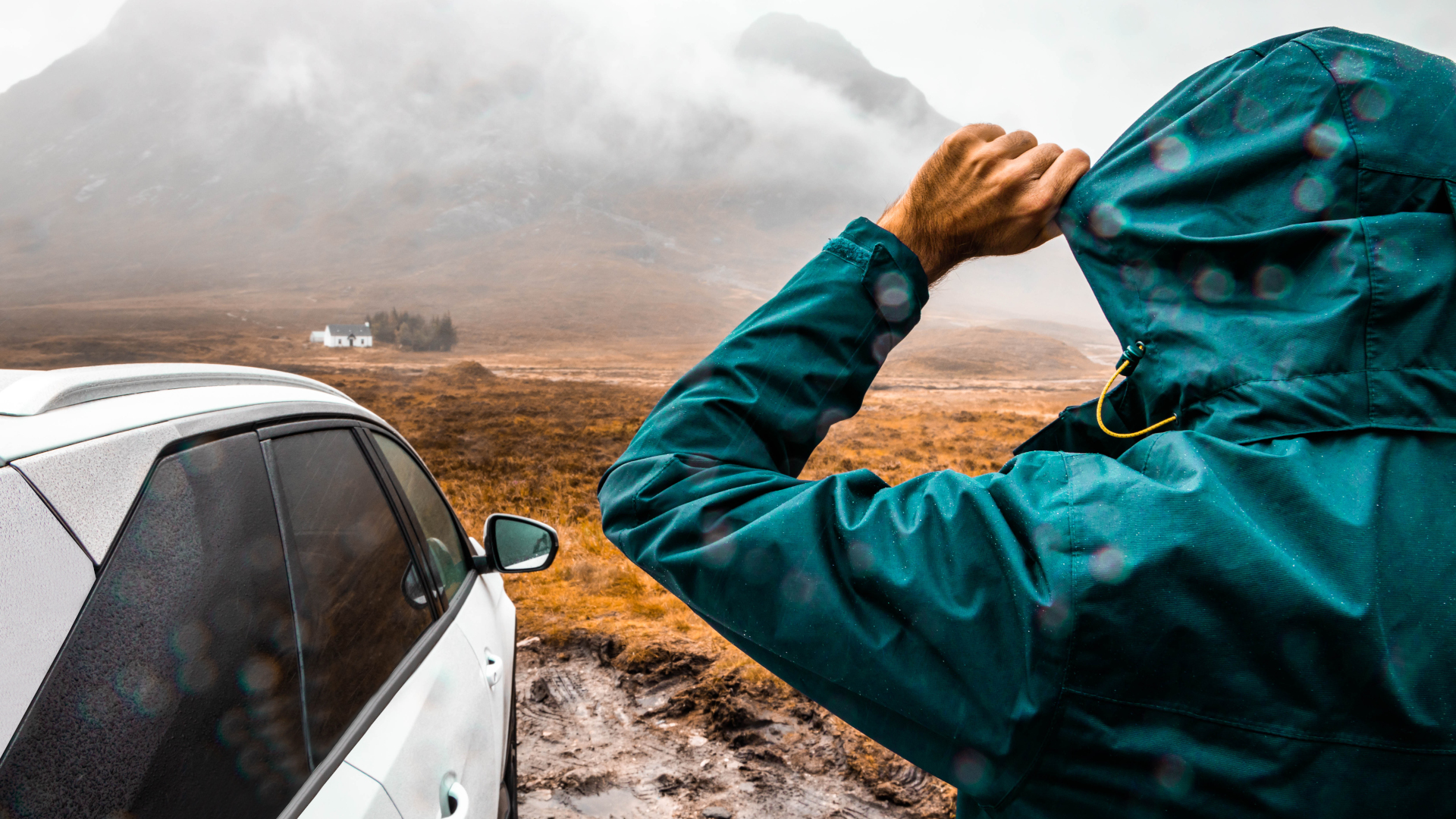Rain jacket vs hardshell: which is best for wet adventures?
We explore the pros and cons of adventuring with a rain jacket vs hardshell jacket to help you choose the best protection for rugged days on the trail

Adventuring in wet weather requires reliable protection against the rain, as well as cold winds, but which is the best waterproof jacket for you? You could go with a light rain jacket but what if the downpour is so torrential you end up wetting out? Or you could arm yourself with the best hardshell jacket, but do you really need all that extra weight and bulk? We explore the pros and cons of adventuring with a rain jacket vs hardshell jacket to help you choose the best protection for rugged days on the trail.
Rain jacket vs hardshell: what’s the difference?
Before we dive in, let’s make sure we’re all on the same page with the differences between the two jackets. They are similar in that they both provide water resistance and wind proofing, and we’re pretty sure you know what a rain jacket is – that lightweight thing you throw on over your best fleece jacket when the heavens open? Rain jackets are typically made using a two- or three-layer construction, consisting of a breathable membrane and a light outer shell. They’re not all the same, but a rain jacket meant for hiking and trail running usually has a simple design with a small hood and a couple of pockets.
A hardshell jacket should be made using a three-layer construction where the breathable, waterproof membrane is sandwiched between an inner mesh or knit layer and an outer layer made from a much more sturdy waterproof material such as one of the types of Gore-Tex. These jackets are generally high profile, with a longer fit, more features such as extra pockets and a large, helmet-compatible hood.

Rain jacket vs hardshell: weather protection
If you just hold a hardshell jacket in one hand and a rain jacket in the other, you can probably guess this one for yourself. The more robust outer shell of a hardshell jacket will provide you with better protection from heavy, prolonged rain and high winds. This is typically combined with features like a longer cut, high collar and a larger hood that offers more coverage than your standard waterproof jacket.
A rain jacket usually has a light, thin outer shell which wets out more easily, and a lower profile which usually means less coverage, although some newer models like the Adidas Terrex Myshelter Gore-Tex jacket cover you from head to upper thigh and fly in the face of this generalization.
There are other features to look for when selecting a jacket, such as taped seams, which you can find on either option and will increase the waterproofness of your choice.

Rain jacket vs hardshell: breathability
As you may know if you’ve read our article on waterproof versus water-resistant gear, breathability is of primary importance when you're looking for water repellent gear that you’re planning on exercising in. While you don’t really need a breathable, waterproof fabric for popping out to the shops in a downpour, if you’re going to be working up a sweat, you want to make sure that moisture can escape or you’ll just end up wet anyway.
All the latest inspiration, tips and guides to help you plan your next Advnture!
For this criteria, it really all comes down to the jacket in question. A three-layer construction with an outer shell, breathable waterproof membrane and inner mesh layer will offer the most breathability, and this can be enhanced by features like pit zips. Although hardshells typically provide all of these features, the robust outer shell can be less breathable, and rain jackets can come in three-layer construction too.

Rain jacket vs hardshell: weight and packability
Hands down, your hardshell jacket is going to weigh more than a rain jacket. Rain jackets are made using thinner, lighter material and are virtually always lower profile – meaning not as many pockets and zips – so even when they’re not featherlight, they’ll still usually be under 1lb and pack away easily inside your best backpack.
Hardshell jackets, with their thicker shell and higher profile, weigh more and don’t pack down so small.

Rain jacket vs hardshell: durability
The sturdy exterior of your hardshell jacket means it’s designed for rugged activities. It won’t just hold up against rain, wind and snow – it will protect you against abrasive rock and even prove a worthy opponent to sharp items in your backpack. Your rain jacket’s light weight and packability means that you sacrifice some of that robustness, and you can expect it to have a shorter shelf life.
When it comes to waterproofing, both hardshells and rain jackets will lose their DWR coating over time, but this can easily be restored by following our guide to how to waterproof a jacket.
Rain jacket vs hardshell: cost
Just when you might be thinking that a rain jacket is far too flimsy to bother with, along comes the question of price. Though you can certainly fork out a fair chunk of cash for a good rain jacket these days, you can also pick them up quite affordably. A good hardshell jacket, on the other hand, is likely to always set you back a pretty penny in return for that long shelf span.
| Header Cell - Column 0 | Rain jacket | Hardshell |
|---|---|---|
| Weather protection | Lighter shell can wet out, and lower profile means less coverage | Sturdy outer shell and 3-layer holds up against prolonged downpours and high winds, plus higher profile means more coverage |
| Breathability | Depends on construction | Depends on construction |
| Weight & packability | Lightweight and packable | Bulkier and heavier |
| Durability | Flimsier | Robust and long lasting |
| Cost | Runs the gamut, but easy to pick up a cheap one | Expensive |
Rain jacket vs hardshell: the verdict
With hardshells coming out on top in the protection and durability departments, if you’re looking for something for really rugged adventures like winter hiking, mountaineering and skiing, they seem like the clear winner. However, if you’re traveling light and just looking for something to keep the wind off at the summit and protection from the occasional shower, you’ll be perfectly happy with a rain jacket, and save on the cost. Further, some of the best waterproof jackets on our list boast three-layer construction and a design much more like that of a hardshell, so it’s possible to find a hybrid to cover all bases.
Julia Clarke is a staff writer for Advnture.com and the author of the book Restorative Yoga for Beginners. She loves to explore mountains on foot, bike, skis and belay and then recover on the the yoga mat. Julia graduated with a degree in journalism in 2004 and spent eight years working as a radio presenter in Kansas City, Vermont, Boston and New York City before discovering the joys of the Rocky Mountains. She then detoured west to Colorado and enjoyed 11 years teaching yoga in Vail before returning to her hometown of Glasgow, Scotland in 2020 to focus on family and writing.

